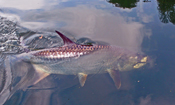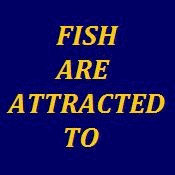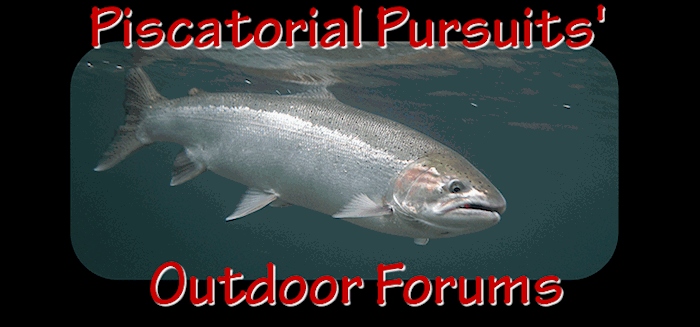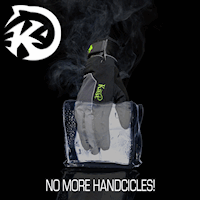#224062 - 12/28/03 11:54 AM
 California has worms
California has worms
|

Alevin
Registered: 01/27/02
Posts: 10
Loc: Klamath River, CA
|
You folks from up North sure know how to catch steelhead. When I started fishing down here with the slip bobbers I got laughed at. Yesterday when I rigged up a "bass worm" behind my trusty hot shot, I had myself convinced that I had lost it. Well, you all know what happened next. I couldn't keep the fish off it. But there is a down side. That is where you all come in. I had trouble hooking fish. Shoot, they would take it sometimes three four or five times, but I couldn't get many good hooksets. I read the worm tip and figured I could get some good suggestions from you all. Hook styles, sizes, double hook rig, any treble hooks?? Most of my quarry is between 3-7 pounds. Thanks for your suggestions and for sharing your secrets....
if anyone asks, there are no steelhead in California
|
|
Top
|
|
|
|
#224063 - 12/28/03 01:35 PM
 Re: California has worms
Re: California has worms
|

Reverend Tarpones

Registered: 10/09/02
Posts: 8379
Loc: West Duvall
|
Do a search.
_________________________
No huevos no pollo.
|
|
Top
|
|
|
|
#224065 - 12/28/03 02:50 PM
 Re: California has worms
Re: California has worms
|

Reverend Tarpones

Registered: 10/09/02
Posts: 8379
Loc: West Duvall
|
Fun5Acres Young Man River:
Okay, you shamed me into diggin up a piece I wrote on this about six years ago. But . . . I do think a search will reveal several recent discussions on the topic.
Reading my books will not help here as I didn't learn about this until after I wrote the books.
Here is my article, with thanks to Salmon Trout Steelheader.
Hot New Steelhead Technique - The International Harvester
By Dave Vedder
My steelheading time is split between British Columbia and the Pacific Northwest. Every time I cross the border into B.C. I am surprised to see that steelheaders on opposite sides of the imaginary red line between the U.S.A. and Canada approach their sport in such different ways. While there are many exceptions, I find that B.C. anglers seldom use drift boats, and even less frequently fish from jet sleds. The typical B.C. steelheader fishes from the bank, uses a ten to twelve-foot rod, almost always uses a float and typically fishes a Gooey Bob, pink plastic worm or salmon roe beneath the float. This approach works, often spectacularly. When I cross back to my side of the border, I find many drift boats, tons of jet sleds and a strong preference for pulling plugs. This technique works and often works extremely well. But I always find myself asking why we approach our sport so differently. After all a steelhead doesn’t give a damn which side of the border he’s on and logic tells me that any trick that works in B.C. will work in the US and vice versa.
We are finally seeing a change in the way U..S. anglers fish for steelhead. Today many top guides are switching to float fishing, even if many still persist in calling a float a bobber. But the pink worm that B.C. anglers use to such good effect is seldom seen in the states. That’s why I was so pleasantly surprised when I recently learned that Sauk River guides Rod Bush and Dan Neibauer are experimenting with a deadly new way to fish the pink worm. They are combining plug pulling with pink worms in a way that blends the best of two top tricks from both sides of the border.
Bush and Neibauer have many years experience pulling plugs on the Northwest’s premier rivers. They both focus most of their attention on the Skykomish, Sauk and Skagit. A few years back Rod Bush booked a trip for a couple of B.C. steelheaders, who naturally brought along their favorite lure, the pink plastic worm. Rod immediately realized that pink worms are a super steelhead lure. He was also impressed with float fishing but he wondered how the worms might work when fished behind a plug used as a bait diver. Rod rigged a plug, with no hooks, as a bait diver, attached a pink worm on a four-foot leader and the rest, as they say, is history.
Rod quickly learned that steelhead can’t resist the shake and wiggle of a worm slowly backed down the river behind a diver. Rod told his friend Dan Neibauer and the two of them began some serious experimenting with the new technique. They found that not only will steelhead strike the worm when presented behind a diver but that the strikes are often savage. Rod’s first attempt at using the worm behind a diver was memorable. “I first tried using a worm behind a diver on the Skykomish fishing for summer runs. The water was quite clear so I used an eight-pound test leader. The first strike was so hard it tore the leader right off the plug. At least I learned they would hit a worm fished that way.”
Both Bob and Dan have had steelehad hit so hard they have broken ten pound leaders ripped the worm off the hook or tore the worm in half. They soon knew they had discovered a very effective new technique.
Dan is one of the many U.S. guides0 who are making the transition from plug pulling to floats fishing. He has learned that his clients catch more fish with a float, lose less tackle and enjoy the sport more. But there are some clients that can’t master a level wind reel and there are some boulder gardens that Dan just has to work with his trusty plugs. Now day’s Dan often rigs one plug in the traditional manner and rigs one with a pink worm. To date the worm has gotten more strikes than the plug but he has lost a higher percentage of fish on the worm than he does with the plug. (The day I interviewed Rod for this article he fished the Sauk using two rods rigged with his best plugs and one with the diver and worm combo. They had nine strikes that day. The worm drew four strikes while the other two rods got five.)
Dan thinks the poor ratio of strikes to landings is due in part to the savage strikes that don’t give the fish a good opportunity to take the lure deep into their mouth and in part due to the fact that he has been fishing the worm with the hook to near to the head. Dan thinks that steelehad tend to hit the tail of the worm and often miss the hook. Both Dan and Rod now thread the worm onto their leader to place the hook at or near the tail
Rod and Dan usually
use a ½ ounce Hot N Tot as their diver. They remove all the hooks from the plug and attache the worm with a four to five-foot leader. They paint their Hot N Tot dull black to avoid fish striking the plug. They then fish the plug and worm combo the same way he would a plug.
Both Rod and Dan report that this new technique has proven deadly. The plug, as it wiggles and dances around the rocks gives the worm an enticing shake and roll that steelehad love. As it slowly works its way through the holding water the pink worm will shake, rattle and roll in the face of holding steelhead.
This new technique makes perfect sense. It’s one of those things that make us wonder, “Why didn’t I think of that.” Those of us who have fished worms under floats know they are deadly. On many B.C. rivers the pink worm is the number one lure of choice. The only problem with fishing the worm under a float is that it sometimes moves through fast water too rapidly for the fish to see it and strike. This is especially true in low viability situations. By putting the worm behind a plug you slow your presentation to keep the worm right in the fish’s face for as long as you like. This is a perfect marriage of two dramatically different techniques.
To rig the plug and worm combo Rod and Dan like to use the smallest a plug that will get to the bottom in the river he is fishing. They tie their leader to the center hook eye of the plug. For leader they prefer a limp monofilament that will let the worm move unencumbered in the current. (A limp leader such as Berkley XL would be perfect for this application.) They use the lightest leader that condition will allow, often going down to eight pound test in clear water.
Rod and Dan have been experimenting with the plug and worm combination for several years and they are still fine tuning the technique. To date the pink worm has proven to be the best color. But Dan. is convinced that other colors might work as well. He is currently experimenting with various sizes and colors of worms. In low clear water he uses pale colors and is planning on trying black and motor oil colors. He now uses a five-inch worms in clear water situations and move up to worms as long as seven inches in low visibility situations.
Rod and Dan. rig their worm in one of two ways. When fishing five inch worms they like to use a worm hook like bass anglers use. His favorite worm hook is the Gamakatsu 01115 worm hook. When using this hook they simply insert the point of the hook into the head of the worm and thread the worth on the hook as far as possible. This results in a worm with the hook near the head.
Their other method of rigging the worm is the one used by most B.C. anglers, which is to use a darning needle to thread the line all the way through the worm. To do this you carefully work the needle and leader through the worm starting the tail of the worm and working the needle all the way through until it comes out the head. This results in a worm with the hook at the tail and the leader emerging form the head the worm. The best hook for this rigging is a simple Octopus shape steelheaders use when drift fishing. Best sizes would be in the 2 to 2/0 range depending on the size worm used. Dan advises that rigging the worms with the leader threaded through the worm can be a bit tricky. He recommends that you thread these at home where you have good light and no distractions.
So far Rod and Dan have found only two problems with using worms behind plugs. The worms can be hard to thread and sometimes the trout won’t leave them alone. Small trout, smolts and big dolly varden all seem to have a fatal attraction to worm. This is not surprising to those of us who have fished worms under floats. At times trout are such as pests you have to switch to something else.
It seems very likely to me that this marriage of U.S. and B.C. techniques may become a very valuable technique in the steelheader’s arsenal no matter which side of the border they fish on. Give it a try and you too may become an international harvester.
If you want to book a trip with the inventors of this technique call Rod Bush at - River Otter Guide Service (206) 399-7145 or Dan Neibauer, Steely Dan’s Guide Service at (206) 334-8514.
###
_________________________
No huevos no pollo.
|
|
Top
|
|
|
|
#224066 - 12/28/03 03:17 PM
 Re: California has worms
Re: California has worms
|

River Nutrients

Registered: 10/12/01
Posts: 2453
Loc: Area 51
|
YoungManRiver, When fishing the plastic worm for Steelhead, you should not place the hooks in the worm as you would, if fishing for Bass in stumpy water. Most Bass fisherman's worms, have the hook point embedded in the worm to make it weedless. A Steelhead rig has the hooks facing out in order to catch the subtle bite's and for quick penetration. Remember that's a Steelhead (hardhead, metalhead) you are trying to get the hook into. I use a double hook set up most of the time but some times with a smaller offering, I use a single hook. I place one of the hooks near the tail of the worm and one towards the middle. Using a 2 to 3 foot leader attached to the plug eye will give the worm good action. I never use a hook that's larger than a size 1 with my plastic worm for Steelhead. Remember to not set the hook as you do with Bass while fishing for Steelhead or you will continue to have problems. A Bill Dance hookset is a no no, when you are targeting Steelhead. 
_________________________
Whoever undertakes to set himself up as a judge of
Truth and Knowledge is shipwrecked by the laughter
of the gods.
-- Albert Einstein
|
|
Top
|
|
|
|
#224067 - 12/28/03 05:03 PM
 Re: California has worms
Re: California has worms
|

Alevin
Registered: 01/27/02
Posts: 10
Loc: Klamath River, CA
|
Fun5, Dave, JonLee
Appreciate your help.
Should clarify some things... 1. I don't fish for bass, and found myself looking over my shoulder when I bought the worms. 2. I actually used a wee wart ahead of the worm, figured more action would be better than the hot shot. 3. I had the hook at the head of the worm. Also noticed that the tail of the worm was shredded. 4. I was using the rod holder so I never did set the hook, but those fish would grab on and hold on for 2-3 seconds...and then they would hit it again!! 5. I actually remember the International Harvester article. At the time my dad subscribed to sts and had underlined and highlighted most of the article. I thought he was nuts. Unfortunately he never got to experiment with the technique. (Let's say he made it to the great steelhead river in the sky) 5. I'm in the hunt for a good worm threader now. Should be able to find one around here with all these bass fishermen.
Thanks for your advice.
YMR
|
|
Top
|
|
|
|
|
|
Arimadude19, Blue Duck, Cygnus, Fishstik, gary mercer, johnny46, McDeek, Mike Boettcher, RDHarper, Sparky, TacomaKid |
|
|
0 registered (),
482
Guests and
2
Spiders online. |
|
Key:
Admin,
Global Mod,
Mod
|
|
11504 Members
17 Forums
72984 Topics
825727 Posts
Max Online: 3937 @ 07/19/24 03:28 AM
|
|
|














 Previous Topic
Previous Topic Index
Index

